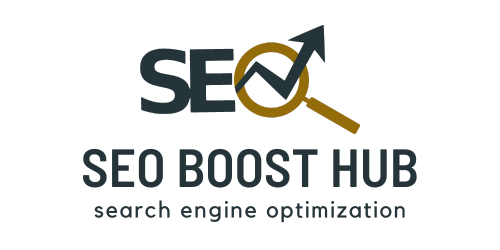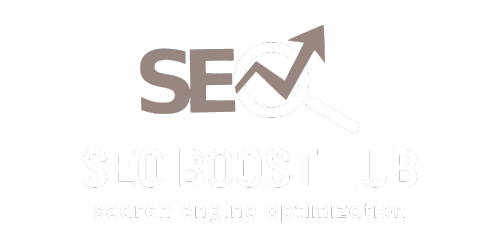Introduction: Why Ranking on Page One Matters
Ranking on page one of Google’s search results is the ultimate goal for businesses and websites. The top positions on Google get the vast majority of clicks, with over 75% of users never scrolling past the first page. In this guide, we’ll break down proven SEO strategies you can use to help your website rank higher on Google, attract more organic traffic, and ultimately grow your business.
1. Keyword Research and Optimization
One of the first steps to rank page one on Google is identifying the right keywords. You need to focus on relevant keywords that your target audience is searching for, ensuring they align with your content and business goals.
Steps for Effective Keyword Research:
- Use tools like Google Keyword Planner, SEMrush, or Ahrefs to identify high-volume, low-competition keywords.
- Target a mix of short-tail and long-tail keywords to capture broad and niche searches.
- Prioritize keywords that are relevant to your audience and match search intent.
Keyword Placement Tips:
- Include your main keywords in your page title, meta description, headers (H1, H2, etc.), and throughout the content.
- Ensure natural keyword usage without overstuffing, maintaining a flow that appeals to both users and search engines.
- Optimize alt text for images with relevant keywords.
2. Create High-Quality, Relevant Content
Content is the backbone of SEO. Google’s algorithm prioritizes pages that offer valuable, informative, and engaging content. To rank on page one, your content must provide answers to users’ questions while being better than the competition.
Content Creation Best Practices:
- Produce long-form content (typically 1,500 words or more) that covers the topic in depth.
- Ensure your content is original and adds unique value. Google’s ranking factors reward comprehensive and informative articles.
- Incorporate visual elements like images, infographics, and videos to enhance user engagement and time spent on the page.
- Regularly update old content to keep it fresh and relevant.
Content-Type Examples:
- Blog posts
- How-to guides
- Case studies
- Infographics
- Videos
3. On-Page SEO Optimization
Optimizing your website’s on-page elements is critical for ranking on page one of Google. On-page SEO refers to optimizing individual web pages to help them rank higher and earn more relevant traffic.
Key On-Page SEO Factors:
- Title Tags: Ensure your title is catchy, includes your primary keyword, and is between 50-60 characters.
- Meta Descriptions: Write compelling meta descriptions (under 160 characters) that entice users to click and include the target keyword.
- URL Structure: Use clean, descriptive URLs that include keywords. Avoid long URLs with random characters.
- Internal Linking: Link to other relevant content on your site to increase dwell time and establish site authority.
- Mobile Optimization: Ensure your website is mobile-friendly, as Google uses mobile-first indexing.
4. Build High-Quality Backlinks
Backlinks are one of the most powerful ranking factors in SEO. Google views backlinks as a signal of trust and authority. The more high-quality backlinks you have from credible sites, the better your chances of ranking on page one.
How to Build Backlinks:
- Guest Posting: Write high-quality articles for other websites in exchange for backlinks.
- Outreach: Reach out to websites in your niche and suggest content collaborations or linking to your resources.
- Broken Link Building: Find broken links on other websites and offer your content as a replacement.
- Content Marketing: Create link-worthy content like original research, infographics, or comprehensive guides.
Focus on gaining backlinks from authoritative websites relevant to your industry. Quality matters more than quantity.
5. Improve Website Speed
Page speed is a Google ranking factor, and users are likely to leave a site that takes too long to load. Therefore, ensuring that your website is fast can significantly improve your chances of ranking higher on Google.
How to Improve Page Speed:
- Compress images to reduce load time.
- Minimize HTTP requests by combining CSS, JS, and HTML files.
- Use a content delivery network (CDN) to speed up site loading for international visitors.
- Implement browser caching to load previously viewed pages faster.
- Utilize tools like Google PageSpeed Insights or GTmetrix to analyze your site’s performance.
6. Enhance User Experience (UX)
Google prioritizes websites that offer a positive user experience. This means that how users interact with your site can directly impact your ranking.
UX Improvement Tips:
- Ensure your site is easy to navigate with a clear structure.
- Use responsive design so that your site works well on all devices.
- Improve readability by using headings, bullet points, and short paragraphs.
- Reduce bounce rates by making your content more engaging and interactive.
7. Leverage Structured Data (Schema Markup)
Using schema markup can help search engines better understand your content and display rich results, such as reviews, events, or FAQs. These enhanced listings can improve your visibility and click-through rate (CTR).
- Implement schema markup using Google’s Structured Data Markup Helper.
- Add schema for key content types like reviews, products, and articles.
8. Monitor and Analyze Your SEO Performance
SEO is an ongoing process. Use analytics tools to track your progress and make data-driven decisions for future optimizations.
Essential SEO Tools:
- Google Analytics: Track website traffic, user behavior, and conversion rates.
- Google Search Console: Monitor your site’s performance, fix crawl errors, and analyze search traffic.
- SEMrush: Analyze keywords, backlinks, and competitors.
- Ahrefs: Conduct site audits and backlink analysis.
Regularly monitor these metrics to ensure your SEO strategies are working and make adjustments when necessary.












